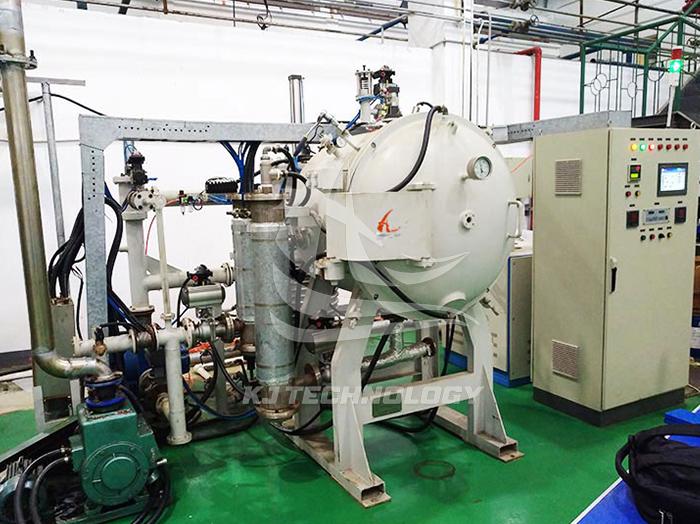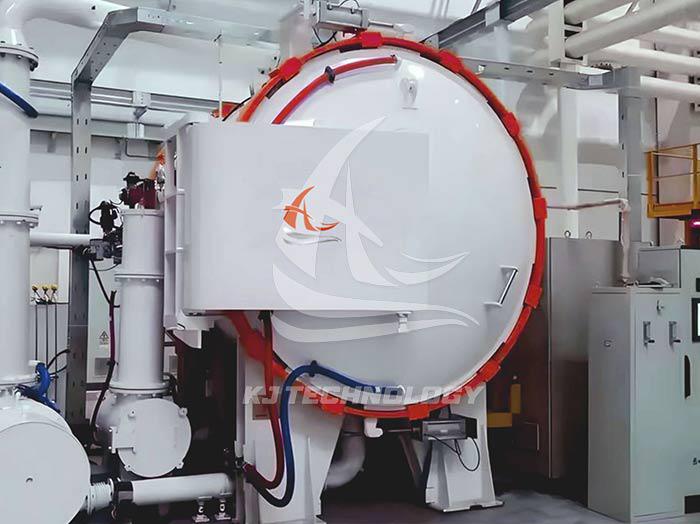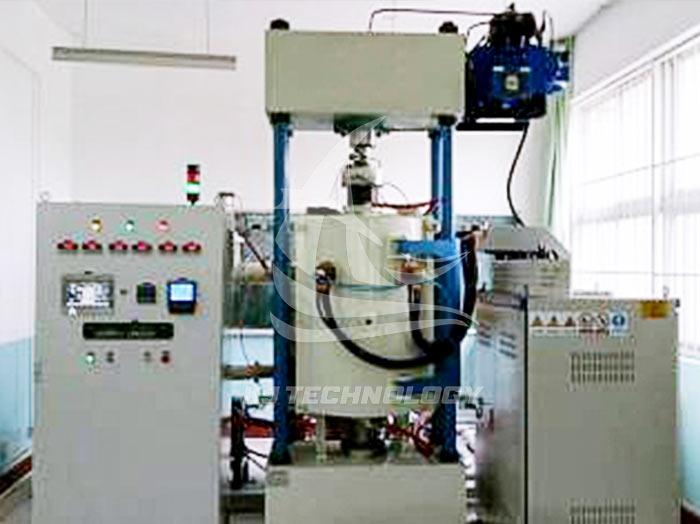Precautions for operating electric heating vacuum annealing furnace
 11-12-2025 Author: KJ technology
11-12-2025 Author: KJ technology
The operation of electric heating vacuum annealing furnace must strictly follow safety regulations and process requirements to ensure stable operation of equipment, compliance with product performance standards, and personnel safety. The following are key precautions during the operation process, classified and explained according to the stages of the process:
1. Preparation before operation: Ensure that equipment and materials meet the requirements
Equipment inspection
Vacuum system: Check the oil level and sealing of vacuum pumps (such as molecular pumps and mechanical pumps) to ensure no leaks; Test the flexibility of vacuum valve opening and closing.
Heating system: Confirm that the electric heating elements (such as resistance wires and induction coils) are not broken or short circuited, and the wiring is firm; Check if the temperature controller parameter settings are consistent with the process requirements.
Cooling system: Check whether the water cooling pipeline is unobstructed, and whether the water flow pressure and temperature are normal (to avoid equipment damage caused by insufficient cooling).
Safety device: Verify whether the functions of over temperature alarm, over voltage protection, emergency stop button, etc. are normal.
Workpiece preparation
Cleanliness: The surface of the workpiece should be free of impurities such as oil stains, rust, cutting fluid, etc., to avoid volatilization and pollution of the vacuum environment or affecting surface quality at high temperatures.
Furnace loading method: Choose the appropriate furnace loading method (such as hanging or laying) according to the shape of the workpiece (such as long axis or thin plate), to avoid uneven heating or deformation caused by dense stacking.
Material compatibility: Confirm that there is no chemical reaction risk between the workpiece material and the materials inside the furnace (such as furnace lining and heating elements) (for example, some high-temperature alloys may undergo carburizing reaction with graphite furnace lining).
Environmental Requirements
There are no flammable or explosive materials around the furnace body, and good ventilation should be maintained to avoid safety hazards caused by high temperature radiation or gas leakage.
The operating table is clean and the tools are arranged in an orderly manner to prevent accidental touch of control buttons.
2. Control during operation: strictly follow process parameters and safety regulations
Vacuum pumping stage
Extraction rate: First start the mechanical pump to pre pump to low vacuum (such as below 10Pa), then switch to the molecular pump to pump high vacuum, to avoid directly starting the molecular pump and damaging the bearings.
Vacuum monitoring: Real time observation of vacuum gauge readings. If the vacuum drops or fluctuates abnormally, immediately stop heating and check for leaks (such as flange seals, observation windows).
Avoid condensation: For workpieces containing moisture, it is necessary to dry them in advance or vacuum them in sections (such as first holding them at 100Pa for a period of time before continuing to vacuum them) to prevent moisture from condensing on low-temperature components (such as vacuum gauges).
Heating stage
Heating rate: Set the heating curve according to the process requirements (such as slow cooling and rapid cooling stages) to avoid rapid heating that may cause thermal stress concentration in the workpiece or cracking of the furnace lining.
Temperature uniformity: Regularly check whether the thermocouple position is offset to ensure accurate temperature measurement; For large-sized workpieces, zone temperature control or stirring airflow (such as equipped with a circulating fan) can be used to improve uniformity.
Overtemperature protection: Set a temperature upper limit (usually 10-20 ℃ higher than the target temperature), automatically cut off the heating power and sound an alarm when overheating occurs.
Insulation stage
Time control: Strictly set the insulation time according to the process requirements. Insufficient time may lead to insufficient tissue transformation, while excessive time may waste energy and cause grain coarsening.
Vacuum degree maintenance: Continuously evacuate during the insulation period to prevent gas reverse osmosis from causing oxidation or decarburization.
cooling phase
Cooling method selection: Choose air cooling (such as filling with high-purity nitrogen) or water cooling according to process requirements. When air cooling, control the inflation rate to avoid workpiece deformation.
Temperature monitoring: Cool down to a safe temperature (such as below 100 ℃) before starting the furnace to collect parts, to prevent high-temperature burns or oxidation.
3. Post operation maintenance: Extend equipment lifespan and ensure next operation
Workpiece retrieval and inspection
Wear insulated gloves and use specialized tools to remove the workpiece, avoiding direct contact with high-temperature surfaces.
Check the surface quality of the workpiece (such as oxidation color, deformation amount) and its properties (such as hardness, toughness), record any abnormal situations for optimizing the process.
Equipment cleaning and maintenance
Cleaning inside the furnace: Use a vacuum cleaner or soft brush to remove oxide scale and debris inside the furnace, to avoid residue affecting the quality of the next annealing.
Heating element inspection: Regularly check the aging condition of the electric heating element (such as changes in resistance), and replace damaged elements in a timely manner.
Vacuum system maintenance: Replace the vacuum pump oil, clean the oil mist filter, and check if the sealing ring is aging.
Data recording and archiving
Record the annealing process parameters (temperature, time, vacuum degree, etc.), equipment operating status, and workpiece quality data to provide a basis for subsequent process optimization.
4. Safety protection: prevent operational risks
personal protection
Operators are required to wear protective clothing, insulated gloves, and goggles to avoid high temperatures, radiation, or splashes.
It is prohibited to wear metal jewelry or flammable materials into the operating area.
emergency response
Develop emergency plans and clarify the handling procedures for unexpected situations such as overheating, electrical leakage, and vacuum leakage (such as emergency shutdown, power cut-off, and evacuation of personnel).
Regularly organize safety drills to ensure that operators are familiar with emergency operations.
Training and Qualification
Operators need to undergo professional training, be familiar with equipment principles, process requirements, and safety regulations, and hold certificates to work.
Unauthorized personnel are prohibited from operating equipment or modifying process parameters.








